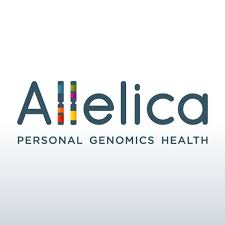
08 Mar Polygenic Risk Score Identifies Patients with Average LDL Who Could Benefit from Statins
MedicalResearch.com Interview with:

Dr. Bottà
Giordano Bottà, PhD
CEO and Co-founder
Allelica
The Polygenic Risk Score Company
MedicalResearch.com: What is the background for this study?
Response: Previous research identified that polygenic risk score (PRS) has the highest predictive power compared to other risk factors and identifies individuals with the same risk of those with familial hypercholesterolemia, but are invisible to traditional risk assessment. We explored for the first time the interplay between the main causes of atherosclerosis, LDL cholesterol and PRS. We were interested in helping cardiologists understand why some individuals have bad arteries full of plaques while others don’t in presence of the same LDL levels and no additional risk factors. Our findings explain why this is the case: LDL does not affect everyone the same. We believe that we are at the forefront of a change of paradigm in cardiovascular risk assessment: LDL levels cannot be accessed without considering the genetics of an individual.
MedicalResearch.com: What are the main findings? How does this risk score differ from others on the market?
Response: At present people in primary prevention with average LDL are not considered to be at high risk and therefore they don’t start any specific prevention strategy. What we found is that more than 10% of people with average LDL have the same risk as people with hypercholesterolemia, for whom statin therapy is recommended. Therefore, using PRS in risk assessment it is possible to identify an additional 10% of individuals in primary prevention who are at elevated risk, and possibly need lipid lowering drug interventions.
MedicalResearch.com: What should readers take away from your report?
Response: We cannot consider an average LDL level to be average for the entire population anymore because, for example, 130 mg/dL can correspond to more than 190 mg/dL in presence of a high PRS. Because of the interaction between LDL and PRS, the sum of these two risk factors does not merely add up but multiplies the effect, so in this case 1 + 1 does not equal 2, but more than 3.
MedicalResearch.com: What recommendations do you have for future research as a result of this work?
Response: Our study paved the way for the understanding of plaque formation in different polygenic backgrounds. What is the etiology of atherosclerosis in people with different polygenic risk score? What are the molecular mechanisms underlying different responses to LDL levels? These are some of the most interesting questions that will need to be answered in the near future.
MedicalResearch.com: Is there anything else you would like to add?
 Response: At Allelica we strive to translate ground breaking scientific findings in tangible benefit for people, therefore have developed a platform that allows any health care system and clinical lab to perform PRS independently, being able to assess cardiovascular risk in a data-driven fashion, with all the arsenal available in 2021 to fight the first cause of death in developed countries.
Response: At Allelica we strive to translate ground breaking scientific findings in tangible benefit for people, therefore have developed a platform that allows any health care system and clinical lab to perform PRS independently, being able to assess cardiovascular risk in a data-driven fashion, with all the arsenal available in 2021 to fight the first cause of death in developed countries.
Citation:
Risk of Coronary Artery Disease Conferred by Low-Density Lipoprotein Cholesterol Depends on Polygenic Background
Alessandro Bolli , Paolo Di Domenico , Roberta Pastorino , George B. Busby , and Giordano Bottà
Circulation. 2021, https://doi.org/10.1161/CIRCULATIONAHA.120.051843
[subscribe]
[last-modified]
The information on MedicalResearch.com is provided for educational purposes only, and is in no way intended to diagnose, cure, or treat any medical or other condition. Always seek the advice of your physician or other qualified health and ask your doctor any questions you may have regarding a medical condition. In addition to all other limitations and disclaimers in this agreement, service provider and its third party providers disclaim any liability or loss in connection with the content provided on this website.
Last Updated on March 8, 2021 by Marie Benz MD FAAD
